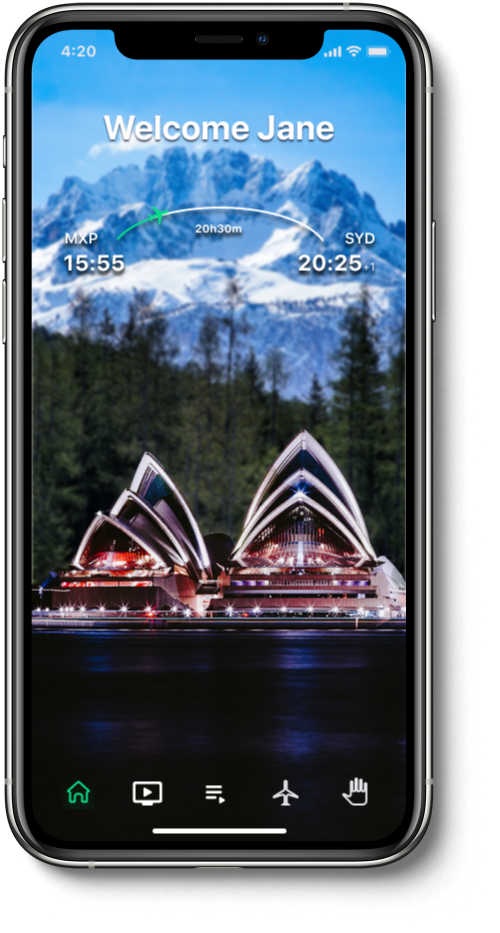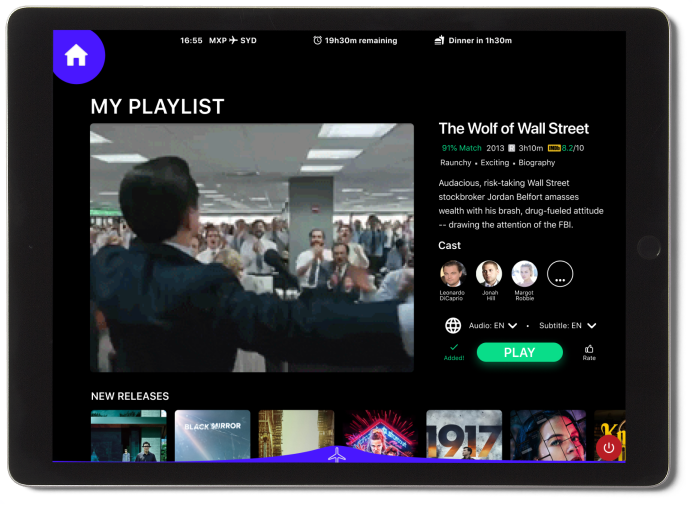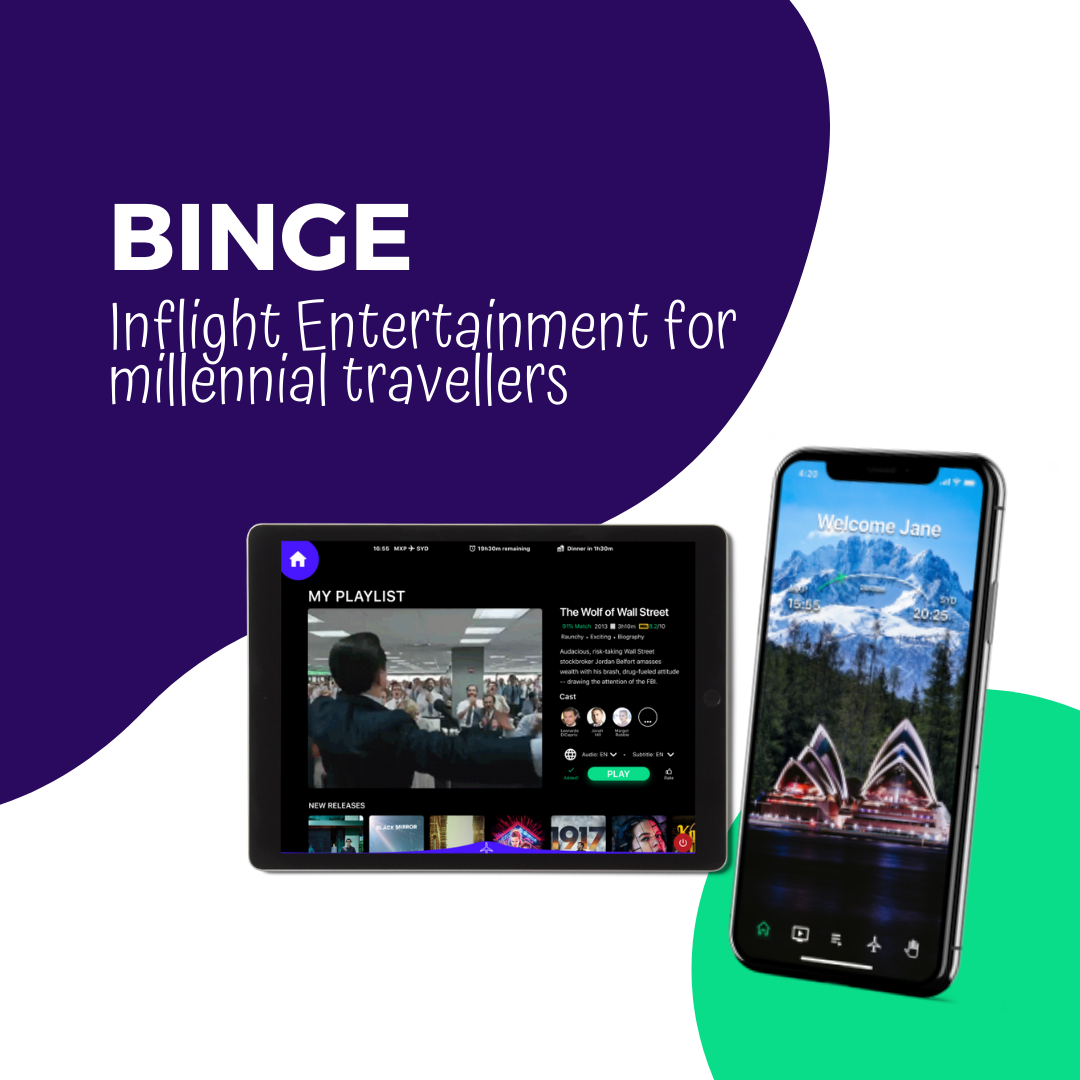Levy Tran – [icon name=”linkedin” prefix=”fab”]
Clickable prototypes
Millennial travellers on long-haul flights increasingly abandon inflight entertainment (IFE) in favour of downloading content on Netflix/Spotify and bringing their own devices to watch on board.
The project focused on a design solution that integrated the old-fashioned comfort of IFE with the bring-your-own-device and binge-watch tendencies of the modern travellers into a seamless travel entertainment experience, across devices and across flights.
Identify user needs – summary of background research
I employed a user-centric design thinking approach, starting with empathising with the users.
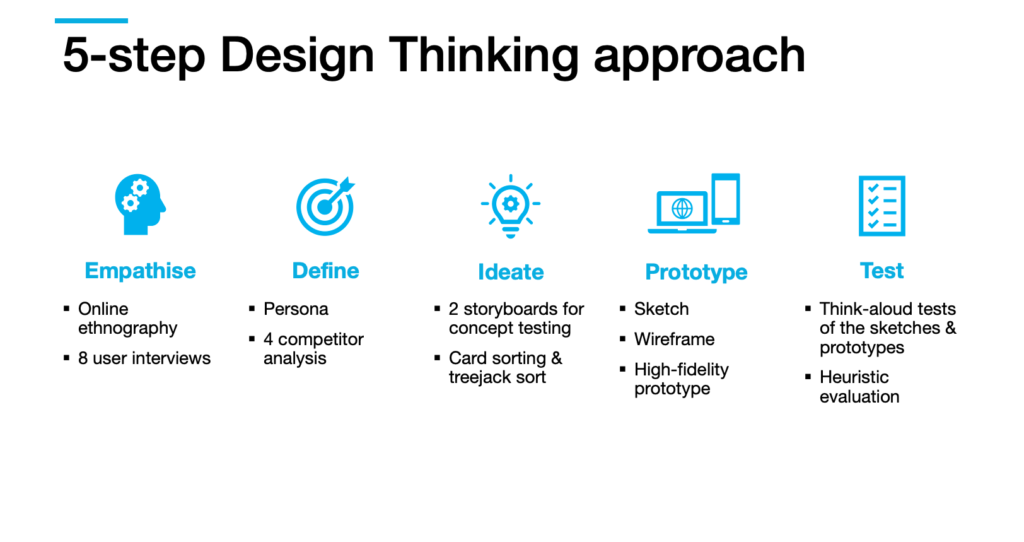
A user persona with 3 main pain points were identified:
- Cannot find interesting movies while browsing onboard
- Cannot binge-watch shows because airlines offer random episodes
- Frustrated because they can’t continue watching after landing
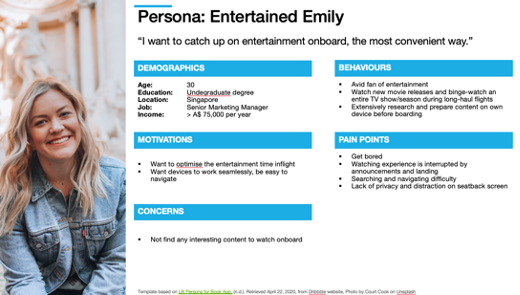
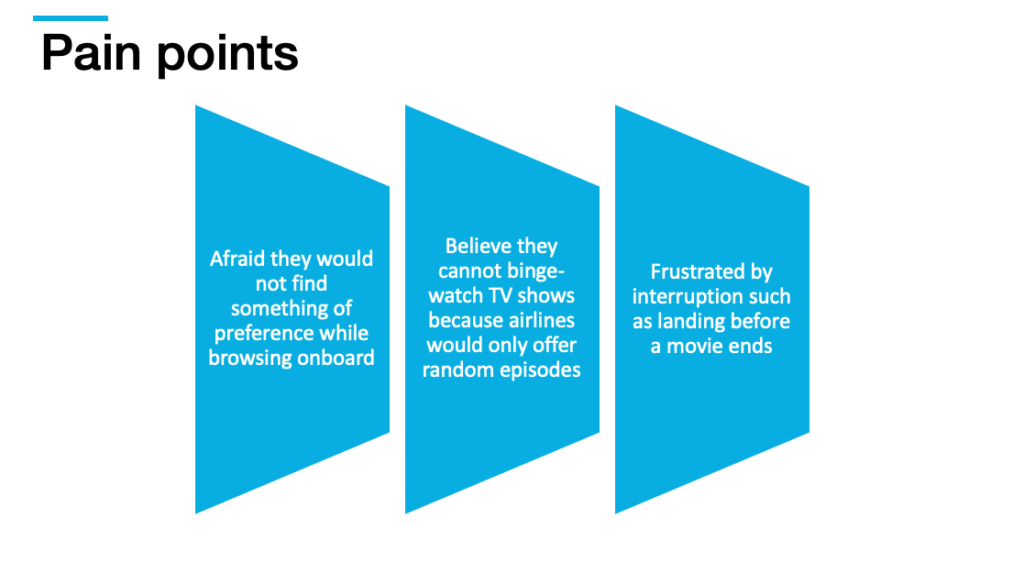
Design Iteration Process:
I brainstormed the solutions using storyboards and conducted a card sorting exercise and concept testing with users:
- Before the flight, encourage users to browse and create playlists on their IFE mobile apps (including Netflix titles offered in-app), then suggest titles to add to the playlists based on what users have already selected.
- When users are on board, let them sync these playlists on their IFE mobile apps to the seatback screens.
- If the flight lands before a movie ends, let users choose to resume watching on their own devices or on the next flight.
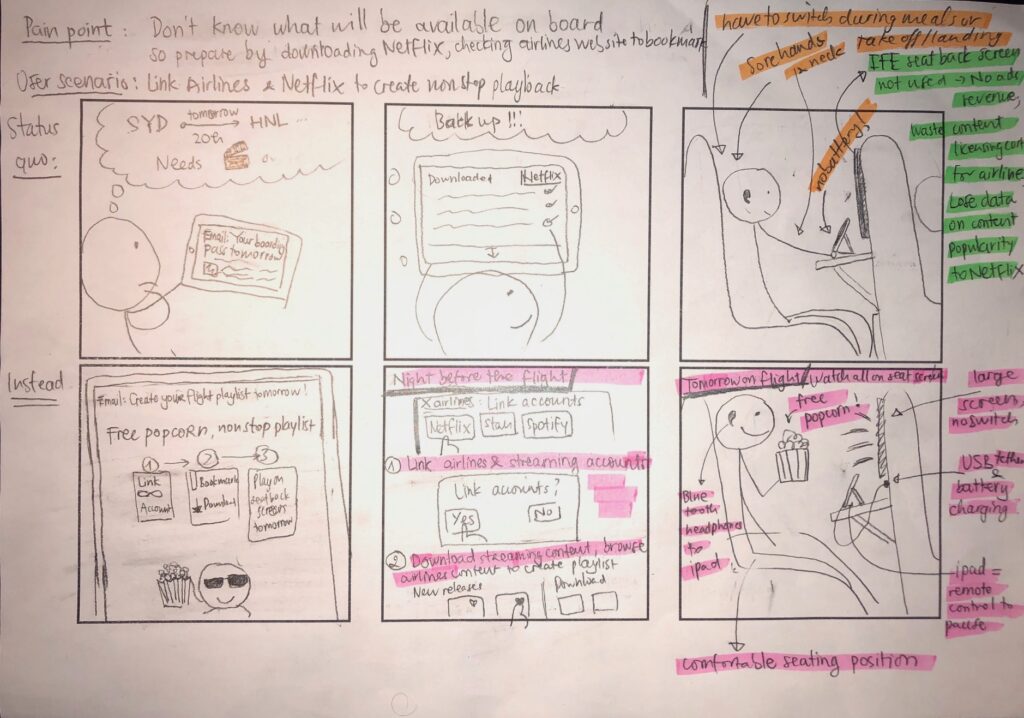
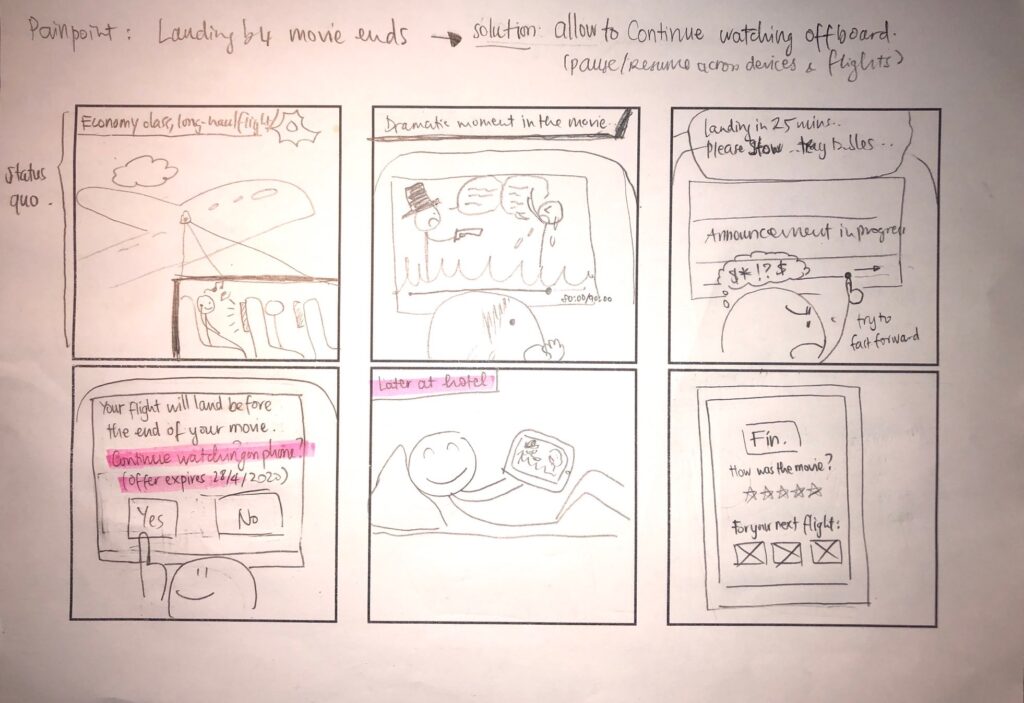
Low fidelity prototypes & user testing:
I conducted think-aloud prototype testing and System Usability Scale (SUS) survey with the 8 users on 2 iterations of a series of low-fidelity prototypes and wireflows.
- Some terminology is unclear and visual elements are either too small or misplaced leading to confusion.
- Users prefer shortcuts (eg. search vs browse) & if an interface does not match their mental models they immediately find alternative paths instead of stopping to think about them.
- Users value ease & convenience the most in syncing options – eg. QR code or seat number.
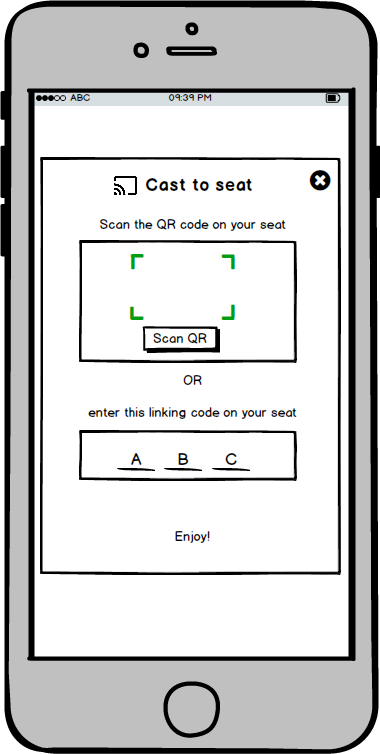
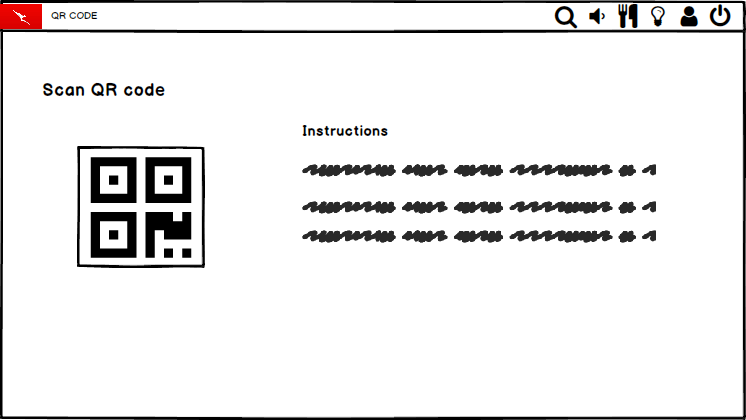
High fidelity prototypes & user testing:
The same think-aloud testing with 4 users was conducted together with a Heuristic evaluation, achieving SUS scores above 80.
The high fidelity prototypes provide millennial travellers the best of both worlds in inflight entertainment, ie. a comfortable “leaning back” watching experience on a larger seatback screen compared to a handheld device, while not compromising on content quality and availability.
